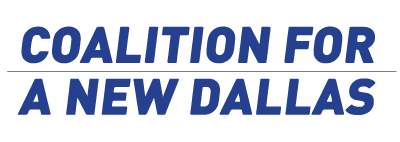I-30
Undoing the Damage
The construction of I-30 destroyed neighborhoods, abetted segregation, and left Fair Park and the Cedars stranded for three generations. Today, we finally have the resources and the leadership to fix it.
The city of Dallas began razing properties to make way for Interstate 30 east of downtown in 1959. The elevated portion from downtown to Samuell Boulevard opened to traffic in the mid-60s. It became a barrier between once-dense neighborhoods like the Cedars and Fair Park, a harbinger of blight. What used to be a contiguous street grid with ample streetcar lines—you could once get from Second Avenue all the way to Oak Lawn—was decimated by an enormous freeway. Today, the neighborhoods are still in recovery, some more so than others.
The time has come to rethink the aging Interstate 30. The Texas Department of Transportation lists its redevelopment as one of the region’s top priorities, and the city has begun to draft its own direction about what this should include. The elevated freeway helped fuel segregation and cut off an entire swath of the city from the core. If done right, the do-over could re-stitch the parts east of it that have fallen into poverty by being cut off from the city’s core.
Where We Stand
We endorse the current joint effort by TxDot and the City of Dallas to remake I-30, especially - and most importantly - tearing down the elevated portion from downtown to Samuel Blvd that has divided and helped to segregate our city for more than half a century.
There are key qualifications to our endorsement that we urge the Dallas City Council to enforce.
First, there should be no eminent domain of private property for the redevelopment of Interstate 30. The right-of-way should not be widened, in fact, it should be narrowed where possible. TxDOT’s own Average Annual Daily Traffic counts have shown that traffic is not increasing. Furthermore, countless evidence shows highway expansions have no positive effect on congestion, but instead often create more.
Second, the plans should also include no frontage roads except for highway access points and exits, which should coincide with the existing city grid. Frontage roads create no new economic development. A restored grid should serve as the primary access from highway traffic dispersing it through the city streets.
Third, the project should prioritize the Interstate 30 corridor as the front door for Baylor University Medical Center by redeveloping the city’s service yards and using Hall Street as a direct thoroughfare, aiding the paths of emergency vehicles and intuitive legibility of the city streets.
Finally, it is imperative that the interstate be lowered from downtown through Old East Dallas, with complete street connections built over the highway at such intersections as Second Avenue, S. Haskell, S. Fitzhugh, S. Munger, and Samuel. These connections should include bus lanes where appropriate, as well as protected bike and pedestrian paths. The design should facilitate ease of transit between neighborhoods and into Fair Park.

